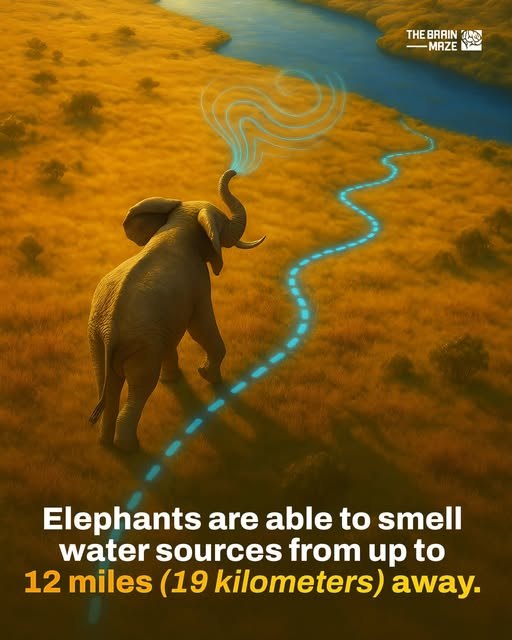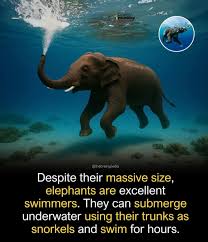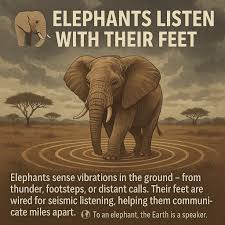Elephants’ Extraordinary Sense of Smell: Nature’s Living Water Detectors

Elephants’ Extraordinary Sense of Smell: Nature’s Living Water Detectors
RELEATED VIDEOS :
In the vast landscapes of Africa and Asia, where survival often depends on finding scarce water sources, elephants have developed an extraordinary ability that sets them apart from nearly every other species in the animal kingdom. With their highly advanced sense of smell, these giants can detect underground or distant water supplies from as far as 12 miles (19.2 kilometers) away, a skill that is nothing short of life-saving during harsh dry seasons.
Recent research conducted by the National Institutes of Health (NIH) has revealed that elephants are capable of identifying specific volatile organic compounds—chemicals such as geosmin, 2-methylisoborneol, and dimethyl sulphide—that are closely associated with the presence of water. By following these chemical cues, elephants are able to locate life-giving resources long before the human eye or ear would even sense their presence.
At the very heart of this incredible adaptation lies the elephant’s trunk, a versatile and powerful organ that functions not only as a tool for feeding, drinking, and social interaction, but also as one of the most sophisticated biological sampling devices in the natural world. The trunk draws in air, carrying microscopic scent particles into the nasal cavity, where millions of olfactory receptor cells process and interpret the smells with astonishing precision.
Scientists have discovered that elephants possess around 2,000 olfactory receptor genes, a number that surpasses many mammals, including the bloodhound, which has long been celebrated for its tracking abilities. This immense genetic arsenal equips elephants with one of the most powerful olfactory systems ever recorded, enabling them to distinguish a breathtaking array of scents—from food sources hidden in dense vegetation to subtle hormonal signals given off by other elephants.
But perhaps the most vital role of this heightened sense lies in survival itself. During droughts, when rivers run dry and vegetation withers, elephants depend on their sense of smell to lead them to hidden underground reserves or distant pools, guiding entire herds to water that can mean the difference between life and death. In this way, their noses are not just tools of biology, but instruments of endurance and guardians of family survival.
The implications of these discoveries stretch beyond biology and into the realms of conservation. Understanding how elephants rely on chemical signals to navigate their environment gives researchers new insights into how habitat destruction, climate change, and human interference may disrupt these ancient survival strategies. Protecting the ecosystems that allow elephants to thrive is not only essential for their survival but also for maintaining the delicate balance of nature itself.
Elephants, with their remarkable trunks and unrivaled sense of smell, remind us that evolution has crafted them into masters of adaptation. They are living proof that intelligence is not measured solely by brainpower, but also by the subtle and intricate ways in which animals interact with their environment. Every breath they take, every scent they follow, and every hidden water source they uncover speaks to a story millions of years in the making.
As humans, we stand in awe of this ability, recognizing that the survival of these magnificent creatures is intertwined with our responsibility to protect them. Their sense of smell, unmatched and almost otherworldly, is both a marvel of science and a symbol of resilience. And in every drought, every migration, and every quiet search for water, elephants show us that nature’s designs are far more brilliant than we often realize.











